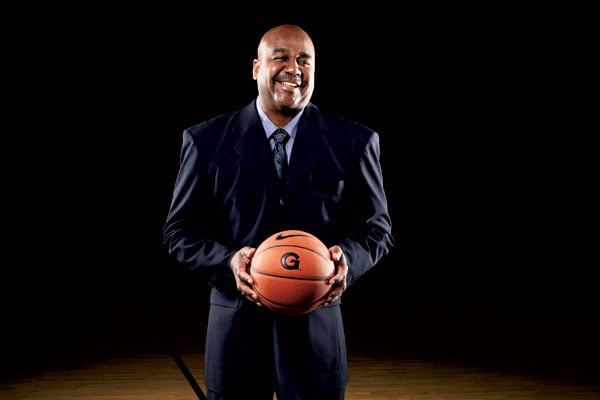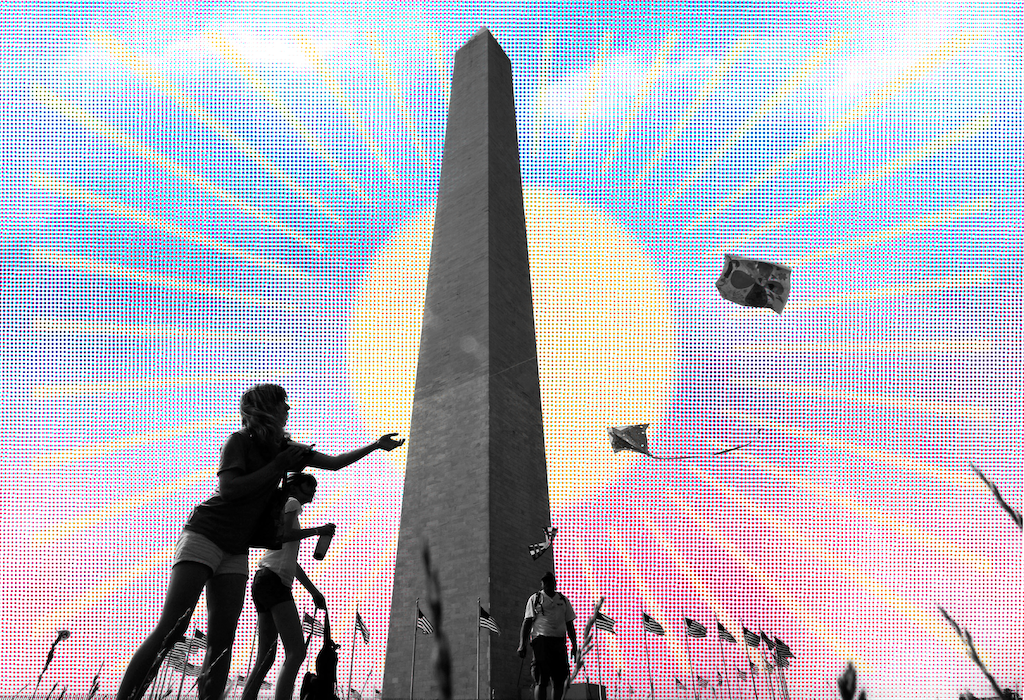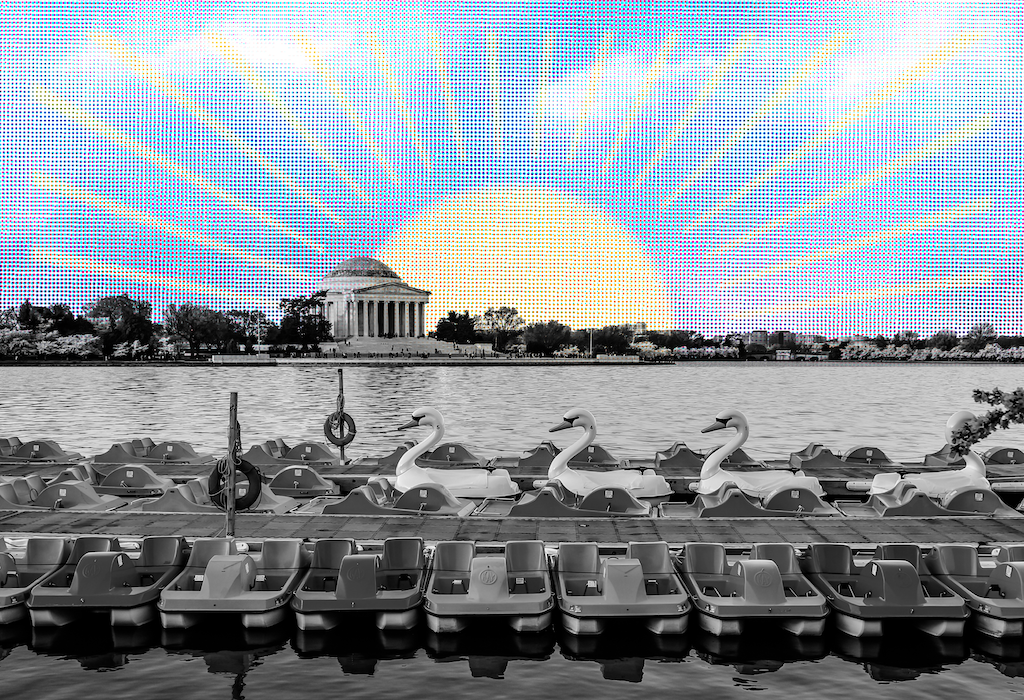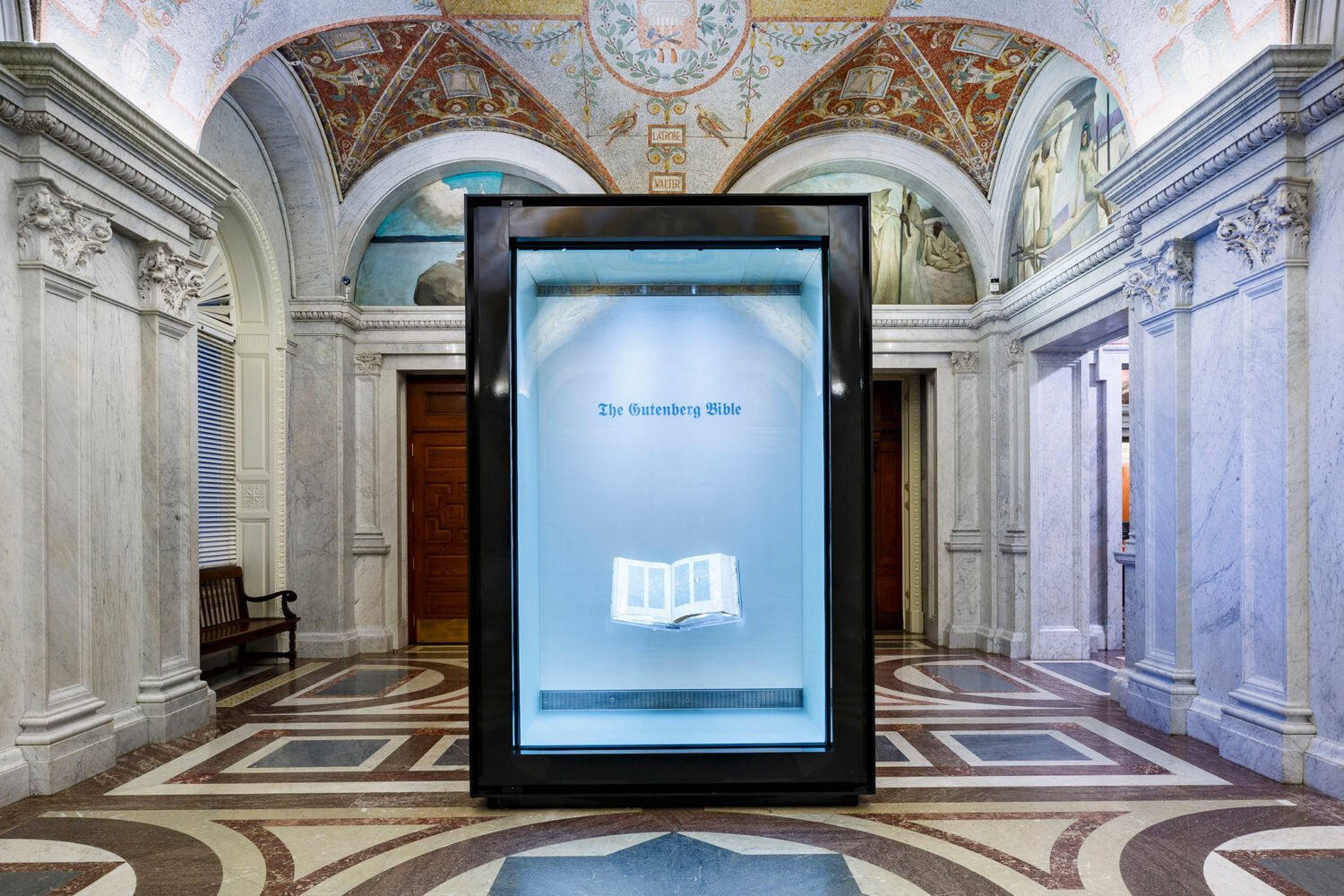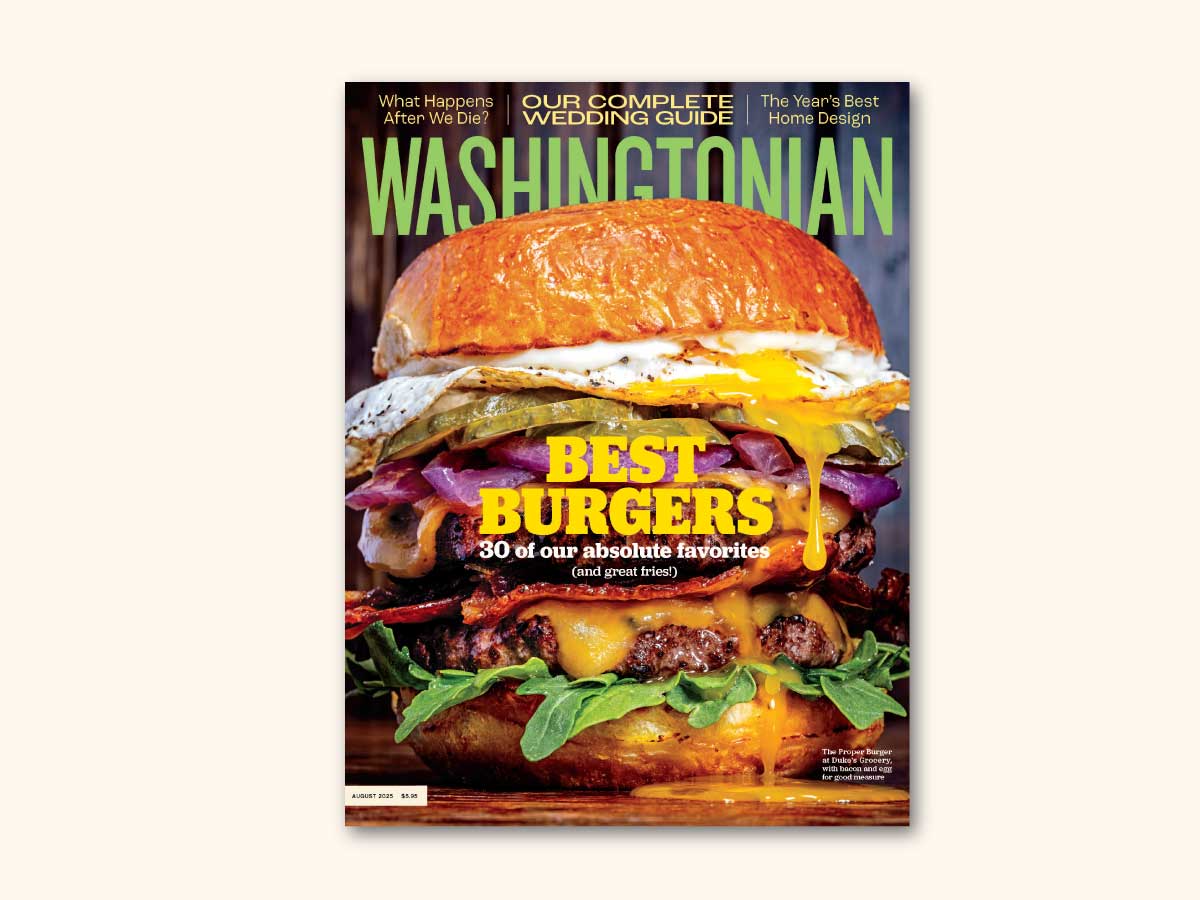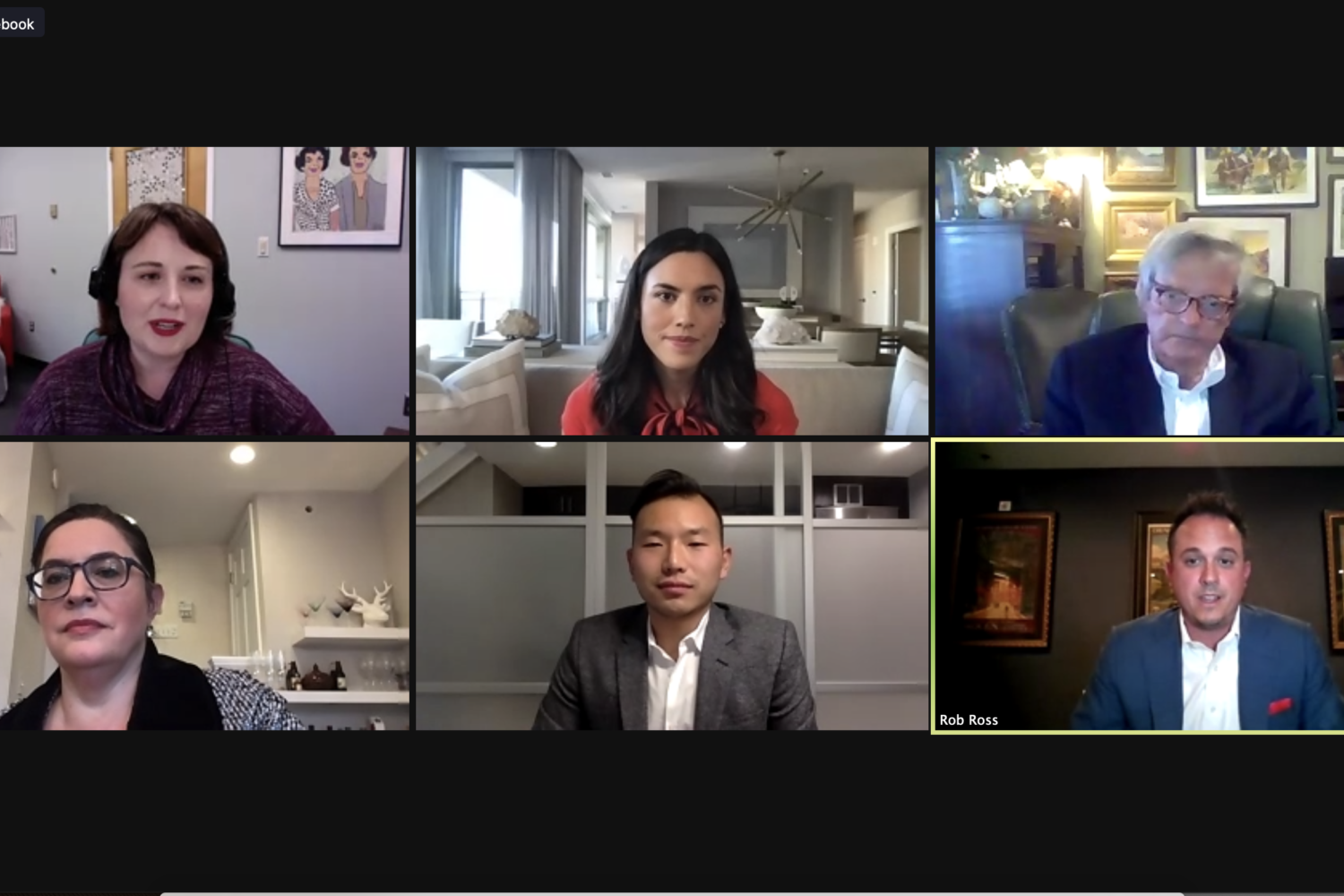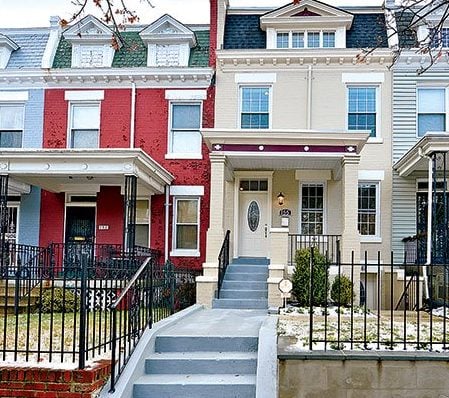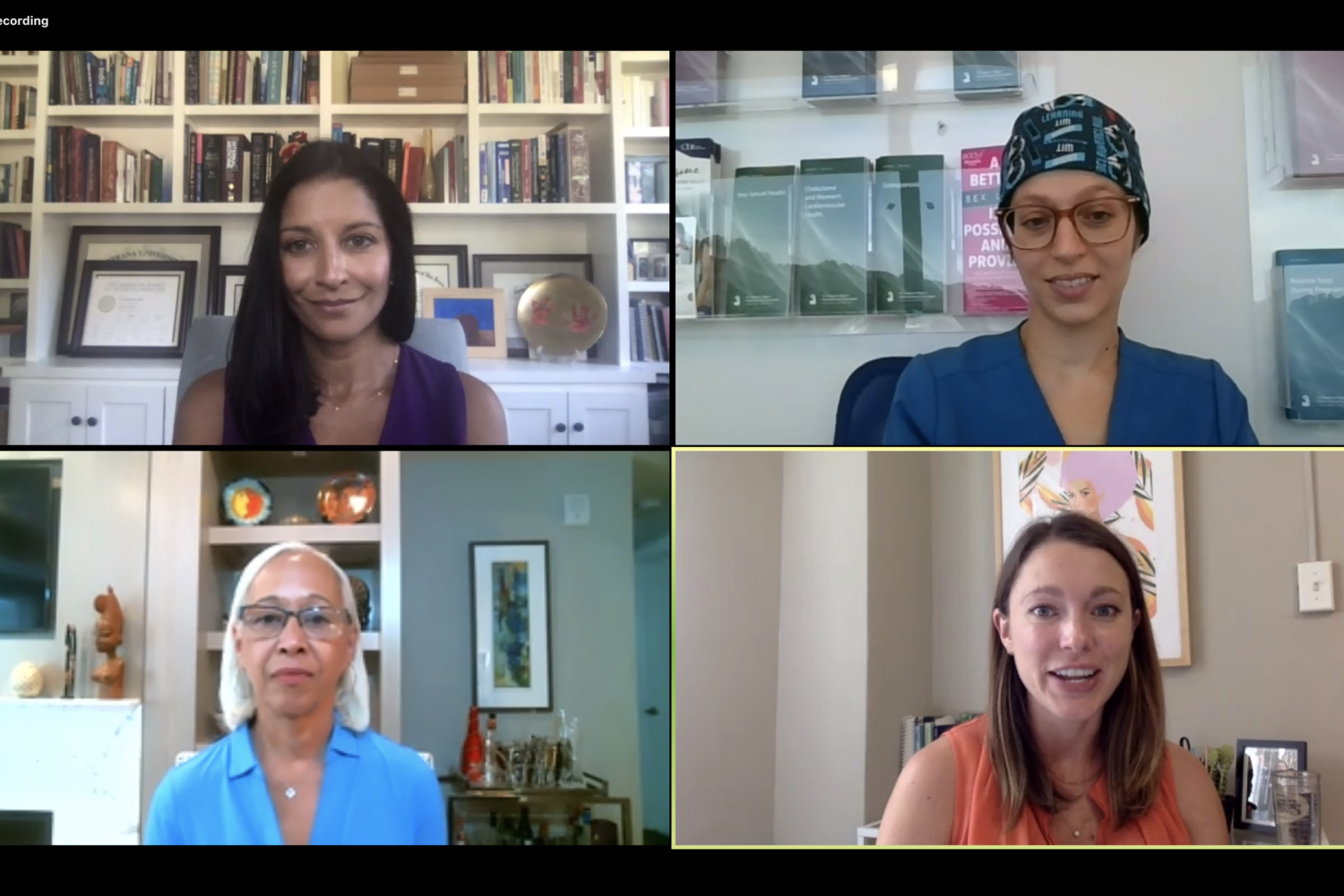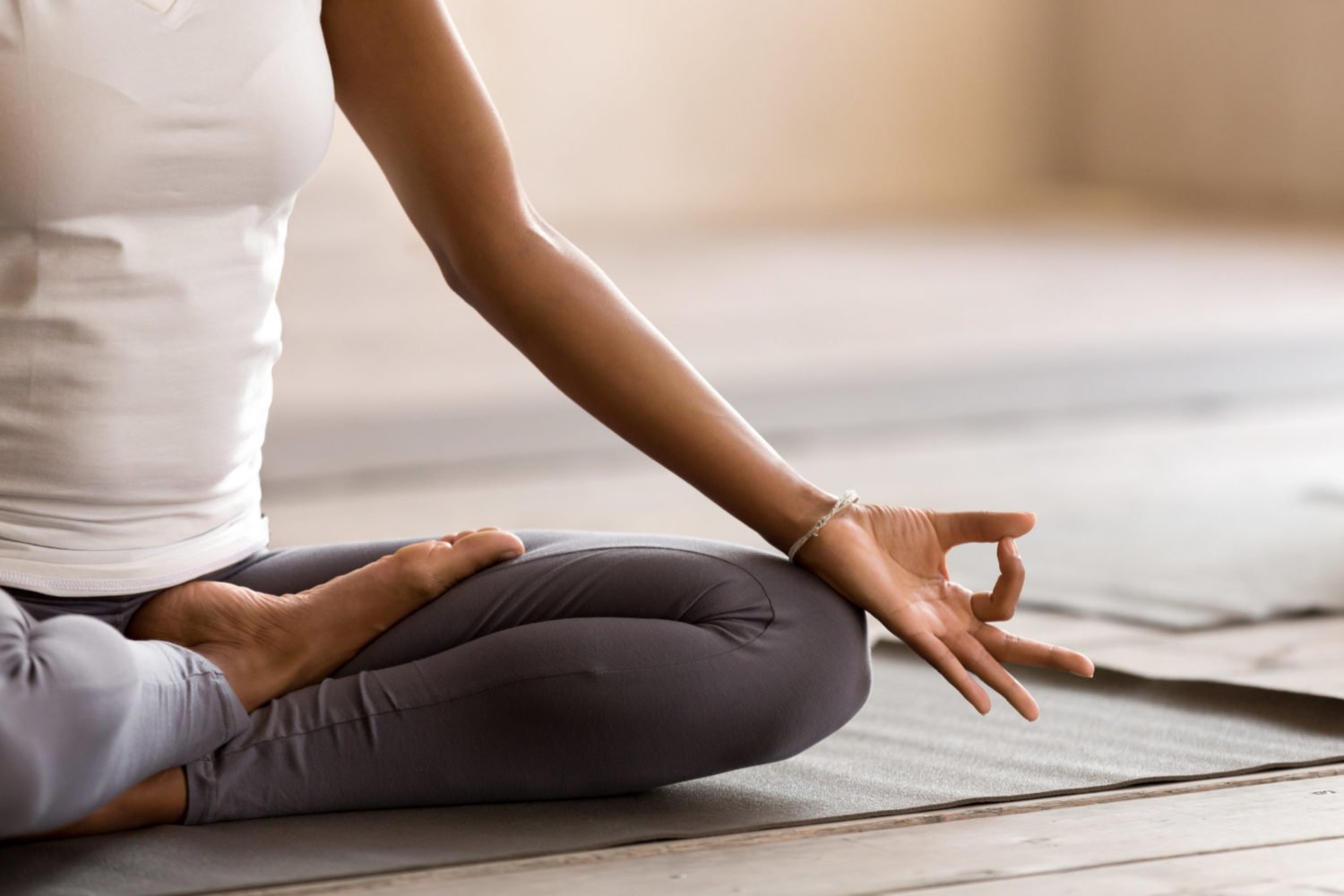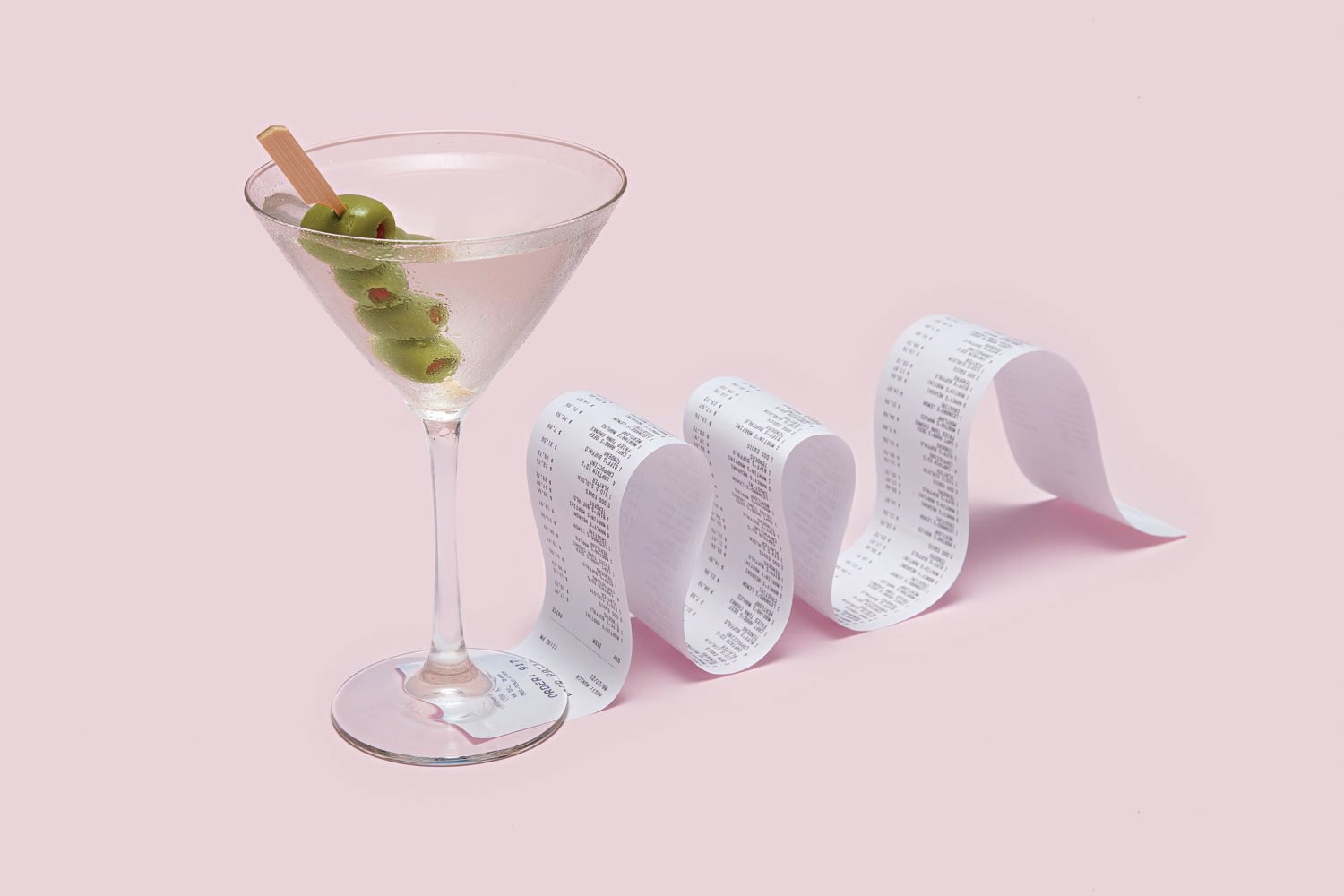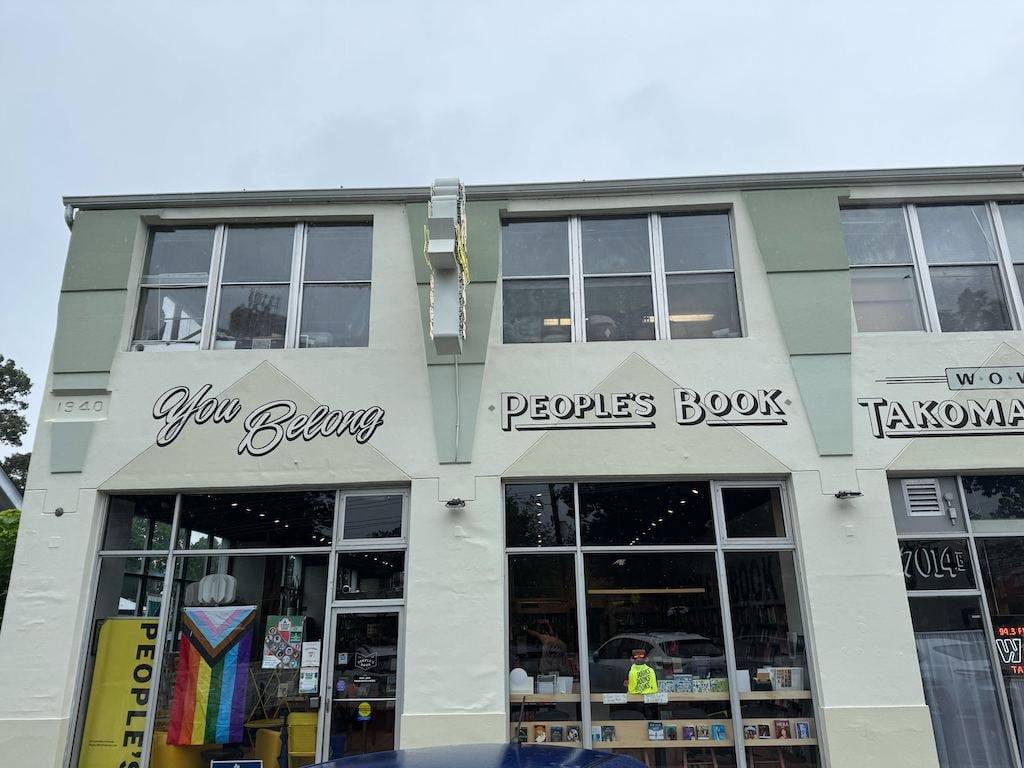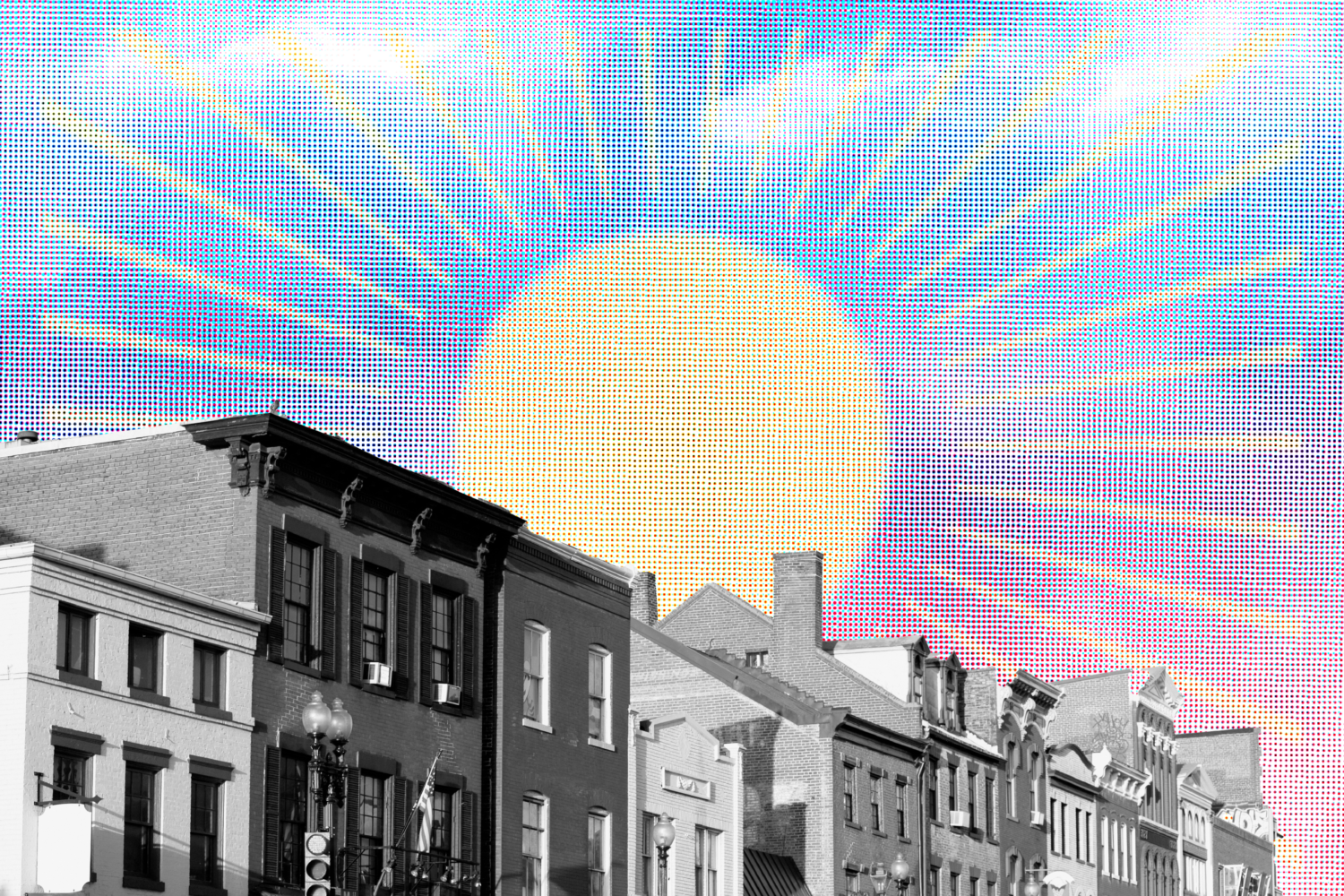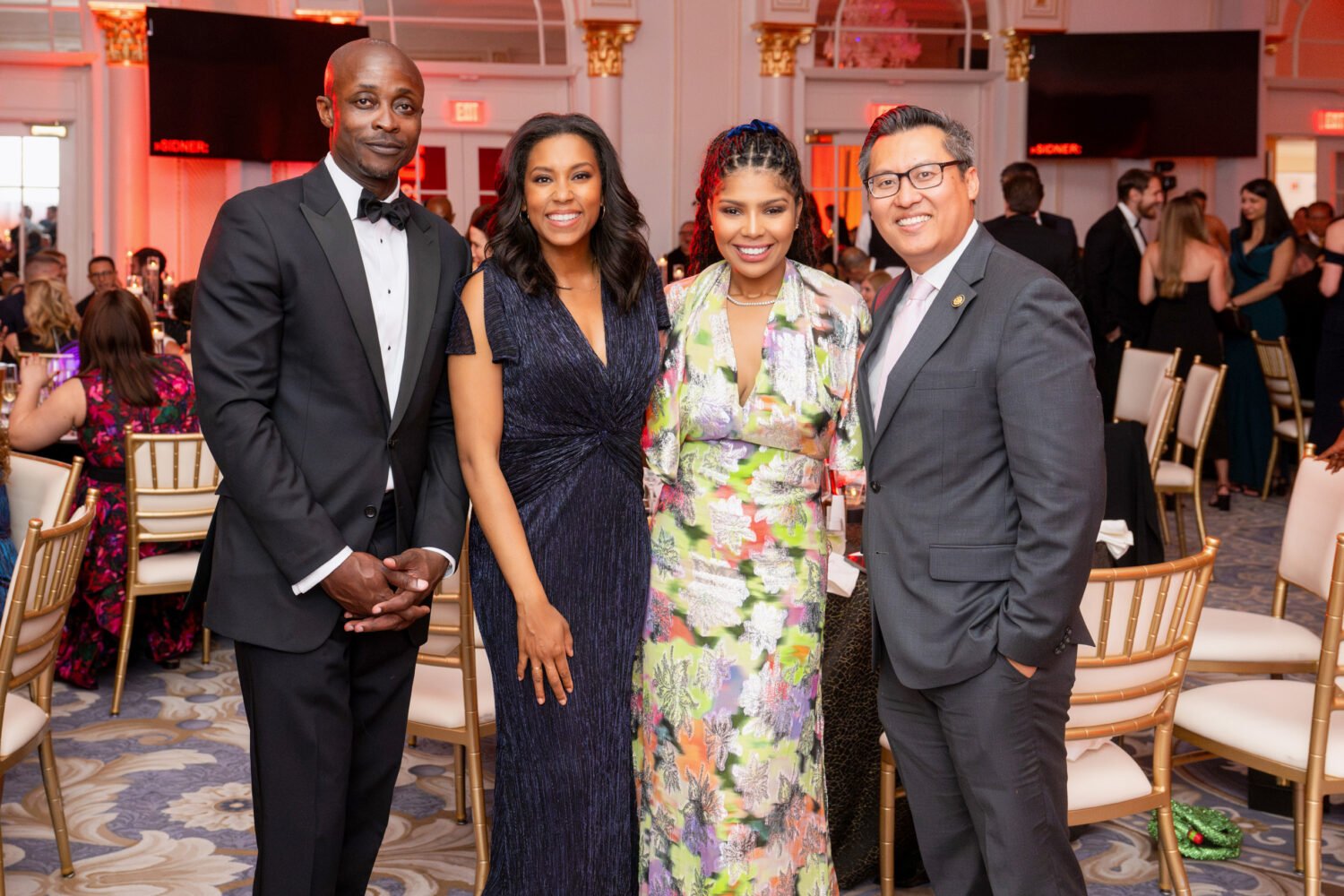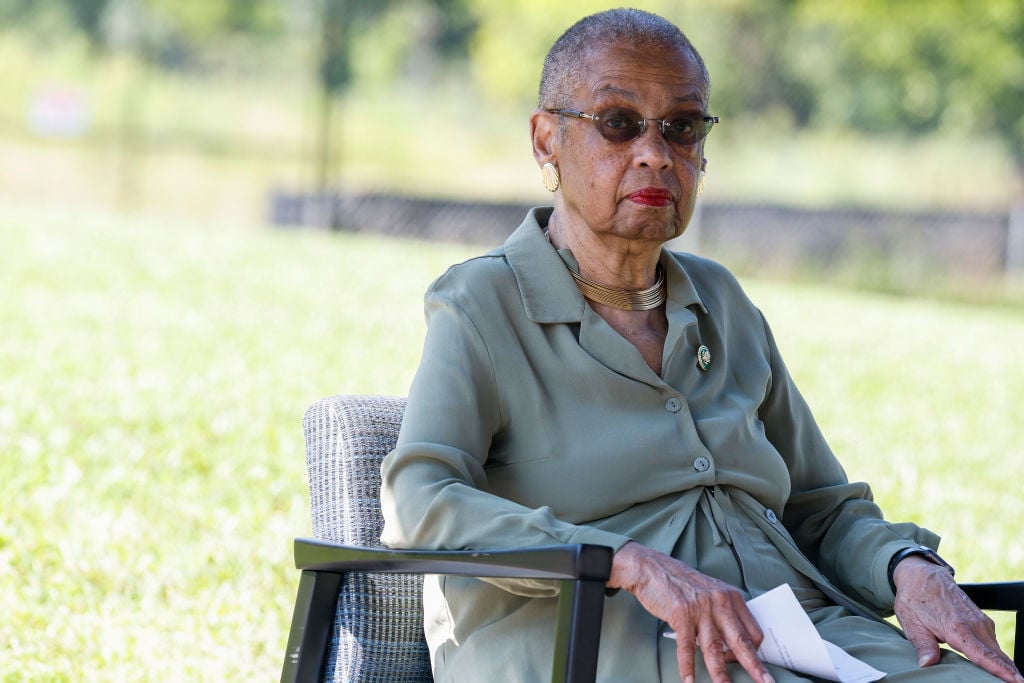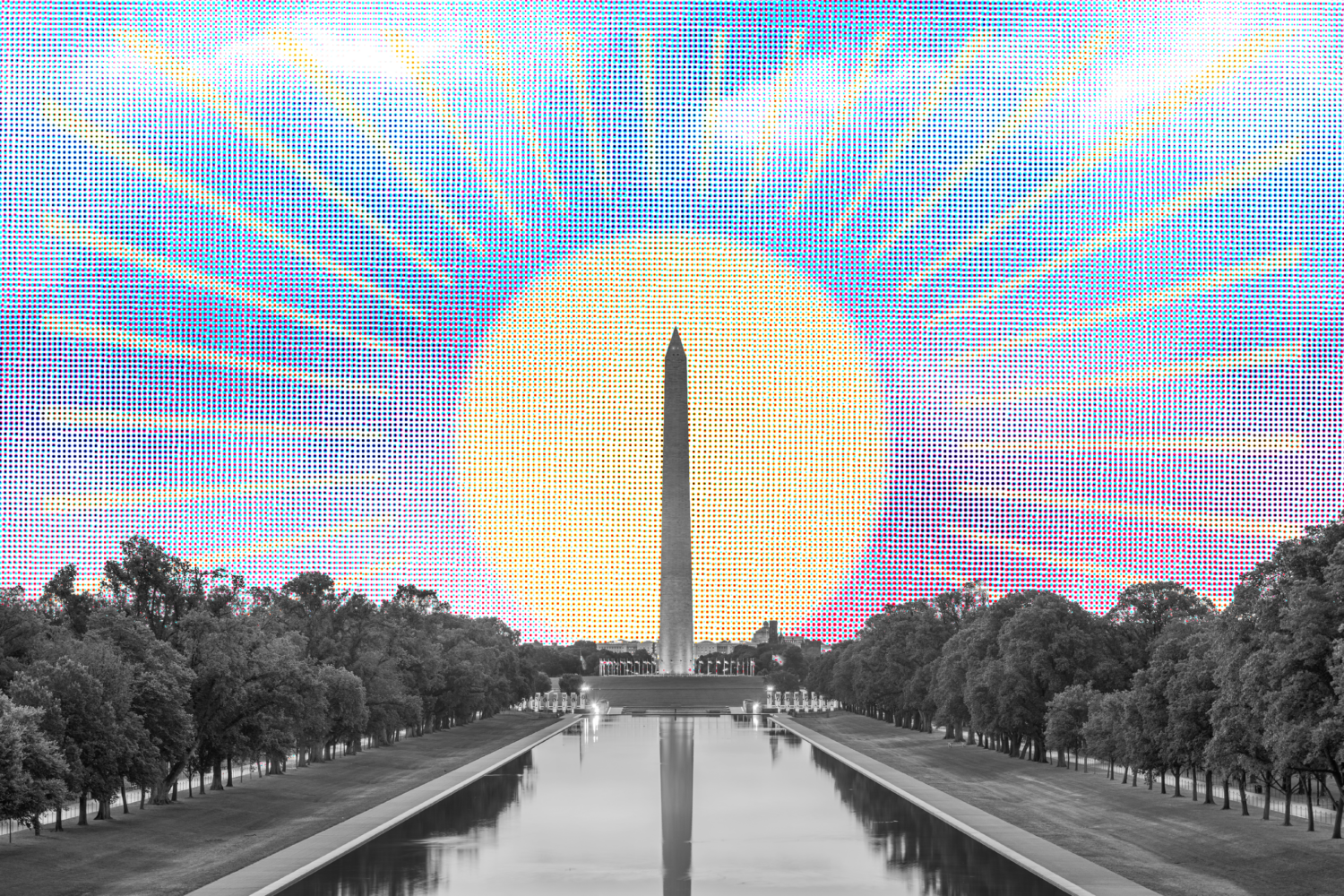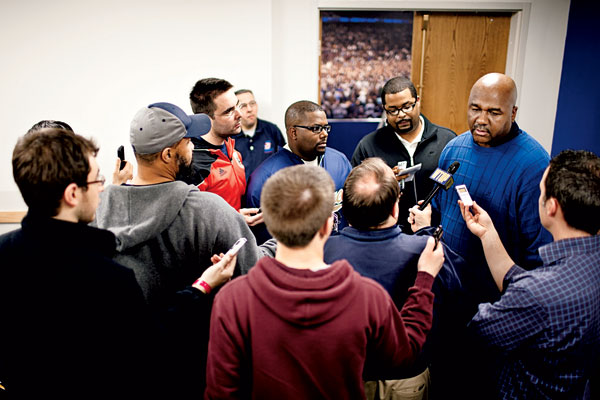
John Thompson III grew up seeing his dad in the spotlight. The elder Thompson was the first African-American head coach to win a national championship. Photograph by Melissa Golden.
Shortly thereafter, Thompson got a call from Carril inviting him to join the coaching staff at his alma mater.
John III first met Monica Moore during his freshman year at Princeton, when his resident adviser asked him to talk to Moore, then a high-school senior, because she was deciding between Princeton and Georgetown.
Thirteen years later, when they were married in the campus chapel, both had returned to Princeton as employees–Monica as a fundraiser, John as an assistant coach under Carril’s successor, Bill Carmody. Carril had retired in 1996 and Thompson remained on Carmody’s staff, then ascended to the head coaching position when Carmody left in 2000.
The couple and their three children–Morgan, John, and Matthew–settled in Northern Virginia after John got the Georgetown job. The move back to Washington gave them additional family support they didn’t yet know they’d need. The next year, in November 2005, Monica was diagnosed with breast cancer just a few days before Georgetown’s opening game in John’s second season as head coach. Monica’s mother had died of lung cancer.
At the time, the couple’s children were all under eight. “I don’t know how I could have gone through it if I hadn’t been here in Washington, where we had a support system, family friends that were there to help,” John III says.
His father suggested he take a leave of absence to support Monica. However, she was determined not only to beat the disease but also not to let it impinge on her family’s established rhythms. “She is much tougher than her husband will ever be,” John III says.
When the Thompsons hosted the Georgetown players and staff at their house for Thanksgiving dinner that November, few at the table knew that Monica was scheduled for surgery the next day. The couple did their best that winter to schedule doctors’ appointments on non-game days so John could attend. During chemotherapy treatments, he would watch videos on his laptop to prepare for the Hoyas’ next game.
“For all she was going through, she gave me the strength to do my job,” he says. Monica has been cancer-free for six years.
The Princeton offense John III favors is the polar opposite of the run-and-gun, pressure-defense style his father used. Did he choose a style of basketball that couldn’t possibly be construed as one copied from his father?
The younger Thompson finds this suggestion preposterous: “That line of thinking has never been a part of me.”
The only area in which Thompson consciously runs away from his father’s legacy is the towel. During his coaching days, Big John would never be seen on the bench without a white towel draped over his shoulder. Despite years of speculation as to its significance, the towel was simply a concession to the fact that he perspired a lot–a trait he passed on to his son.
But John III was unwilling to co-opt that imagery: “I couldn’t do it. I just thought it would be perceived as trying too hard to look just like him. I use a towel–I just don’t throw it over my shoulder.”
Longtime Georgetown sports-communication director Bill Shapland may have come up with the best way to describe how the two Thompsons differ: “The father is like a laser beam, extremely focused. The son is like a lighthouse. He sees everything.”
John III’s attention to detail extends to every aspect of the program, from media guides to the schedule magnets that Georgetown fans affix to their refrigerators. They are all run past the coach’s desk before leaving the building. When asked if Coach Thompson is a control freak, one member of the Georgetown staff quickly answers, “Yes.”
More often than not, though, Thompson’s attention to detail manifests itself in his devotion to his players–the kind of devotion that makes parents eager to turn their teenage sons over to his care. He’s obsessed not only with fostering basketball players but with creating full men.
The lessons he teaches don’t stop at the gym door. Jeff Green calls Thompson “one of the most important people I’ve encountered in my life.” Despite leaving school early to play in the NBA, Green has returned to campus during the off-season to fulfill his academic commitments and is now two classes shy of earning his Georgetown degree. He credits Thompson with motivating him to stay on course.
When the team traveled to China this past summer, the university organized an excursion to the Great Wall. Freshman Tyler Adams had suffered a severely sprained ankle several weeks prior to the trip and was still wearing a walking boot when the team touched down in Beijing. There was concern among the training staff that allowing him to make the hike to the top of the wall would compromise his recovery. Thompson overruled them. He didn’t want Adams to miss the opportunity.
The China trip was intended to continue the tradition of cultural exchange through basketball that Thompson’s father had begun when he took his teams to Taiwan in 1976 and to Israel in 1993. Georgetown’s itinerary included four exhibition games against local teams. The first, in Beijing against the Shanxi Zhongyu Brave Dragons, went off without incident. Georgetown won 98-81.
The second game was scheduled for the next night against the Bayi Rockets. Georgetown may be a college team, but the Bayi Rockets are not. Bayi plays in the South Division of the Chinese Basketball League. They are pros, and many have served in the People’s Liberation Army.
The game was physical. Fouls were not getting called–at least not equally. When Bayi was awarded its 57th free throw midway through the fourth quarter compared to Georgetown’s 15, it seemed obvious the fix was in.
Things got so ridiculous, in Thompson’s opinion, that in the third quarter he sent a member of his staff to summon Georgetown athletic director Lee Reed because Thompson was ready to pull his team off the court. Reed told Thompson he would support whatever decision the coach felt was best, but things calmed down and Thompson let the game continue.
Then, with 9:32 remaining, Georgetown senior guard Jason Clark became entangled with one of the Chinese players near center court. Clark pushed him, and the Chinese player began throwing punches. Within seconds, players from both teams joined the fray and things spiraled downward fast. Chairs and bottles were hurled; spectators joined the melee. According to Washington Post reporter Gene Wang, “As the brawl spilled beyond the baseline, an unidentified Bayi player pushed Georgetown’s Aaron Bowen through a partition to the ground before repeatedly punching the sophomore guard while sitting on his chest.”
Thompson frantically ushered his players off the court. The crowd threw water bottles. One member of the Georgetown delegation sitting in the crowd was injured. As the Hoyas scurried down the corridor, Thompson says, the Chinese players issued a threat. “In perfect English, their guys are screaming down the hall: ‘We’re going to kill you when you go outside! We’re going to kill you when you go outside!’ “
When Georgetown’s team emerged from the arena door, the players found that the lights in the parking area had been cut off. Thompson feared for the team’s safety.
The team boarded their buses quickly and Thompson, on the lead bus, ordered the driver to leave. “I felt we’d be safe once we got to the hotel because Vice President Biden was staying in the same hotel with us and Secret Service was everywhere,” Thompson says.
They made it back to safety, but the drama was just beginning. Georgetown officials began hearing reports from members of the Vice President’s delegation that Chinese police might arrest Hoya players. Written reports and video clips of the incident began to circulate in the United States, and Coach Thompson was at the center of an international incident.
Thompson turned the ordeal into a teachable moment.

